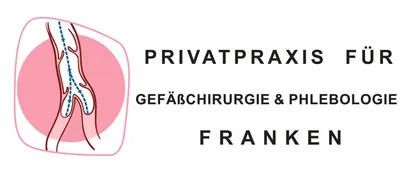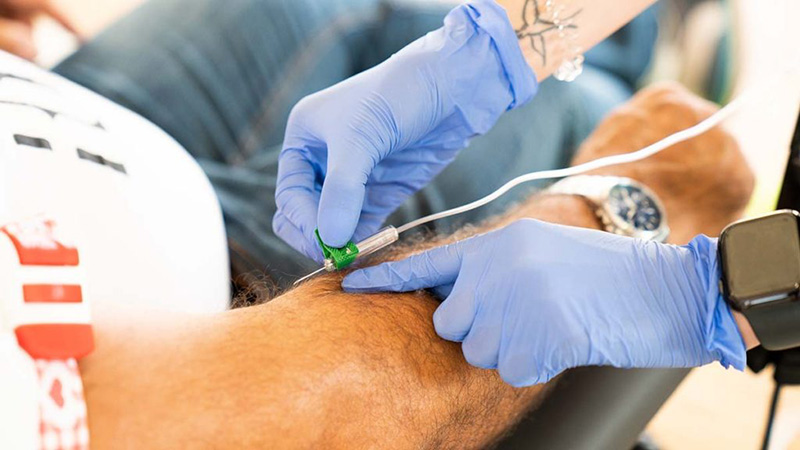Ozone Therapy: The Healing Power of Active Oxygen
Ozone therapy is presented as a well-established and versatile treatment method that utilizes the specific properties of ozone. Ozone, an active form of oxygen, is described as having strong oxidative effects that promote numerous healing processes within the body. The text particularly highlights high-dose ozone therapy as offering innovative possibilities for treating various health issues and enhancing overall well-being.
Mechanism of Action:
Ozone (O₃), a molecule composed of three oxygen atoms, is stated to have strong disinfectant, circulation-promoting, and anti-inflammatory effects. In medical applications, ozone is used in precisely calibrated dosages to achieve therapeutic effects. It can be administered intravenously, intra-articularly (into joints), and topically on the skin. Ozone is described as promoting the formation of reactive oxygen species (ROS), which act as signaling molecules and activate antioxidant enzyme systems in the body.
High-dose ozone therapy involves enriching a larger quantity of the patient’s own blood with medical ozone and subsequently reinfusing it intravenously. This method is purported to deliver high concentrations of active oxygen directly into the bloodstream, leading to intensive stimulation of metabolism, cell regeneration, and the immune system. The high dosage is specifically claimed to increase the production of adenosine triphosphate (ATP), resulting in improved cellular energy supply.
Alleged Benefits of High-Dose Ozone Therapy:
Immune System Strengthening: Activates immune cells, particularly macrophages and lymphocytes, and enhances the body’s defense mechanisms.
Improved Circulation: Promotes tissue oxygenation, especially by improving the flow properties of blood.
Anti-inflammatory Effects: Particularly beneficial for chronic inflammation by modulating inflammatory mediators.
Detoxification: Supports the liver, promotes the breakdown of harmful substances, and strengthens the body’s antioxidant capacity.
Pain Relief: Especially in rheumatic diseases and joint complaints by promoting the release of endorphins.

Purported Applications of Ozone Therapy:
The text claims that ozone therapy is successfully used in various medical fields, including:
Chronic Infections: Supportive treatment for viral and bacterial diseases (e.g., Lyme disease, herpes, hepatitis).
Circulatory Disorders: Promotes microcirculation and oxygen supply, helpful in peripheral artery disease.
Rheumatic Diseases: Pain-relieving and anti-inflammatory effects in conditions like arthritis and osteoarthritis.
Skin Diseases: For acne, eczema, psoriasis, and poorly healing wounds, also in aesthetic medicine for skin rejuvenation.
Anti-Aging and Regeneration: Promotes cell regeneration, skin tightening, and acts as a natural booster for vitality and well-being.
Sports Medicine: For faster regeneration after injuries, performance enhancement, and prevention of overuse injuries.
Neurological Disorders: May have a supportive effect in migraine, multiple sclerosis, and other neurological conditions.
Gastrointestinal Complaints: Positive effects in chronic inflammatory bowel diseases like Crohn’s disease or ulcerative colitis.
Mentioned Scientific Studies and Experiences:
The text asserts that various scientific studies support the efficacy of ozone therapy, particularly in chronic inflammation and infections. A study from the University of Siena is mentioned as demonstrating its effectiveness in patients with disc problems. Promising results are also reported in the treatment of diabetic foot ulcers and wound healing disorders. Furthermore, studies are said to indicate that ozone therapy can be helpful in chronic pain and in supporting cancer therapies by improving quality of life and mitigating side effects of conventional treatments.
Patient testimonials and practical examples reportedly show significant improvements in general well-being, particularly in chronic fatigue, lack of energy, and immune system support. The text claims that many patients have experienced increased quality of life through ozone therapy in pain management, and even therapy-resistant conditions often respond positively. Impressive results are highlighted in skin problems and wound healing.

Treatment Procedure:
The described procedure involves:
Consultation: Analysis of complaints and determination of the appropriate treatment approach, including detailed medical history and possibly laboratory diagnostics.
Ozone Therapy Administration: Depending on the indication, therapy is administered intravenously, locally, intra-articularly, or through rectal insufflation.
Observation and Follow-up: Monitoring of reactions, adjustment of the therapy plan if necessary, and advice on complementary measures such as diet and lifestyle.
Safety and Individualization:
The text states that ozone therapy is considered safe when performed correctly. However, medical consultation and individually tailored dosage are deemed essential for optimal results and to avoid side effects. With correct application, side effects are described as rare and usually mild, such as a temporary feeling of warmth or slight fatigue.
Conclusion:
The text concludes that ozone therapy offers a versatile and effective way to strengthen the immune system, promote healing processes, and alleviate chronic complaints. Whether for prevention, as a supportive measure for existing illnesses, or to enhance well-being, the “healing power of active oxygen” is presented as a valuable contribution to holistic health. Readers are encouraged to contact the provider for an individual consultation.
Academic Considerations:
It is important to note that while this text presents ozone therapy in a positive light and mentions scientific studies, a comprehensive academic evaluation would require a critical examination of the cited research, considering study design, sample size, methodology, and potential biases. The claims made in this text should be cross-referenced with established scientific literature and the consensus of major medical organizations, as ozone therapy remains a controversial topic with varying levels of acceptance within the mainstream medical community.

